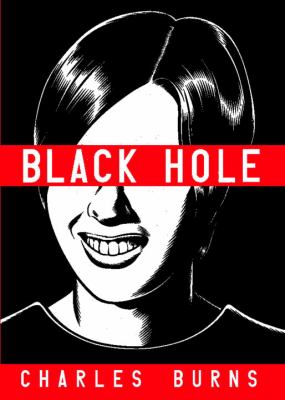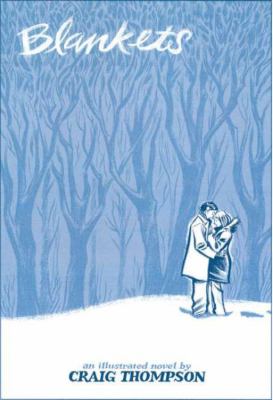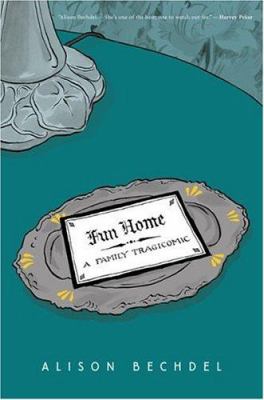Graphic Novels For the Skeptical
Posted on September 23, 2014 at 6:00 am
By Brian Vander Veen
I grew up in a bit of a book desert, a decent sized city, roughly as big as Spokane, with only a single library and one tiny bookstore. Even calling it a bookstore is a little generous; it was more of a newsstand, to be honest, staffed by a single employee and containing a few rows of yellowing mass-market paperbacks. And in the back of the store, curiously adjacent to a sketchy back room marked “adults only,” was a single rack of kids’ comics that I browsed regularly.
Despite the limited selection, I was fortunate to have a parent who would not only take me on regular trips to that tiny bookstore, but who happily supported my reading comics without ever insisting that I set them aside to read “real books” instead. My taste in comics evolved as I grew up and my interests shifted from the moralizing tales of Richie Rich that I devoured in elementary school to the convoluted plots of X-Men and Spiderman that I loved in my teens.
It wasn’t until grad school, however, after having taken a long hiatus from reading comics to pursue what I considered more academic interests, that I realized how much the genre had changed during the years that I had set it aside. Sure, there were still many of the same superhero franchises I remembered, but there were also a number of writer-artists who had taken the form to a whole new level of literary and artistic expression.
Nonetheless, when I talk about graphic novels with people today, I encounter a lot of readers who dismiss graphic novels out of hand, who still associate the form with those adolescent newsstand comics from twenty, thirty years ago. I think that’s a bit of a shame, as I suspect those same readers might be missing out on something they’d otherwise enjoy. So here are my recommendations that I hope will convince even the most recalcitrant graphic-novel skeptic:
Set in suburban Seattle in the 1970s, Black Hole by Charles Burns combines tropes from that era’s classic teen films with an unsettling dose of body horror and hallucinatory surrealism. The central conceit of Burn’s novel—a strange plague, transmitted by sexual contact, that results in grotesque, body-altering mutations—serves to capture masterfully the anxieties of adolescence and nascent sexuality.
The book itself took nearly a decade to produce, and it shows in the finely detailed and painstakingly composed illustrations. Burns’ visual style is partly a nostalgic nod to the early horror comics that were effectively banned in the US in the 1950s, but the overall effect of his high contrast images and heavy use of black ink is reminiscent almost of woodcuts. His work has also appeared in a number of places outside the graphic novel world, including the cover of Iggy Pop’s Brick by Brick, numerous cover portraits for The Believer magazine, and a limited series of beer labels for Seattle’s Elysian Brewing Company.
Black Hole definitely isn’t a kids’ comic—graphic images of nudity and drug use appear throughout the book—but mature readers should appreciate this haunting coming-of-age tale.
In the acclaimed graphic memoir Blankets, artist Craig Thompson chronicles his strict religious upbringing and his later difficulties maintaining his faith amid the uncertainties of adolescence. Raised in a fundamentalist Christian home, young Thompson uses his talent at drawing to escape the claustrophobia of his sheltered childhood, despite having parents who dismiss his creative endeavors as a distraction from more spiritual pursuits.
At a church camp in his teen years, Thompson begins a romantic relationship with a young woman named Raina. Eventually, her own, more flexible spiritual views—and the expansion of Thompson’s social universe that Raina helps bring about—begin to erode the faith into which Thompson has been indoctrinated.
This is a hefty tome for a graphic novel, nearly 600 pages in length, but Thompson’s economy of words and the conscious care he took to avoid being overly cynical about his subject matter make this a less burdensome read than you might expect. Similarly his black and white drawings are lighter, more graceful than Burns’ illustrations, but like Burns, Craig Thompson really excels when he grapples with minutely detailed patterns like the intricately tangled limbs of trees or the ornate paisley patterns of Raina’s quilt that form powerful visual motifs throughout the book.
Alison Bechdel first rose to prominence in the 80s with her recurring comic strip Dykes to Watch Out For (which incidentally coined the now famous Bechdel test often used by media critics to discuss the degree to which women’s interests are often ignored in movies and other media). However, Fun Home is widely considered her defining work.
Another graphic memoir, Fun Home focuses largely on Bechdel’s relationship with her father—a closeted gay man—and Bechdel’s struggle with her own sexual orientation and subsequent coming out. Bechdel tells her story as a non-linear narrative, infused throughout with mythical and literary allusions that are not mere academic pretension, but rather, Bechdel’s means of illustrating the kind of chilly emotional detachment that pervaded her home life.
Visually, Bechdel’s straightforward style is clearly influenced by the world of serialized comic strips in which she first began writing, but her cinematic eye for framing scenes makes the experience of reading her work something more akin to watching a movie. The frank depictions of sexuality in the book have ruffled some feathers in the past, but the graphic scenes tend to serve the story without feeling unnecessarily gratuitous.
More recently, Bechdel has published another memoir, this time focusing on her relationship with her mother and exploring their relationship through the lens of psychoanalytic theory.
Want more?
There’s plenty more I could mention from Guy Delisle’s offbeat travelogues, to Joe Sacco’s illustrated investigative journalism, to Lynda Barry’s meditations on art and the creative process, but there’s pretty much a graphic novel out there to suit any literary preference. Have a graphic novel you’d recommend to any graphic novel newbies? Let us know in the comments!
Tags: comics, graphic novels




